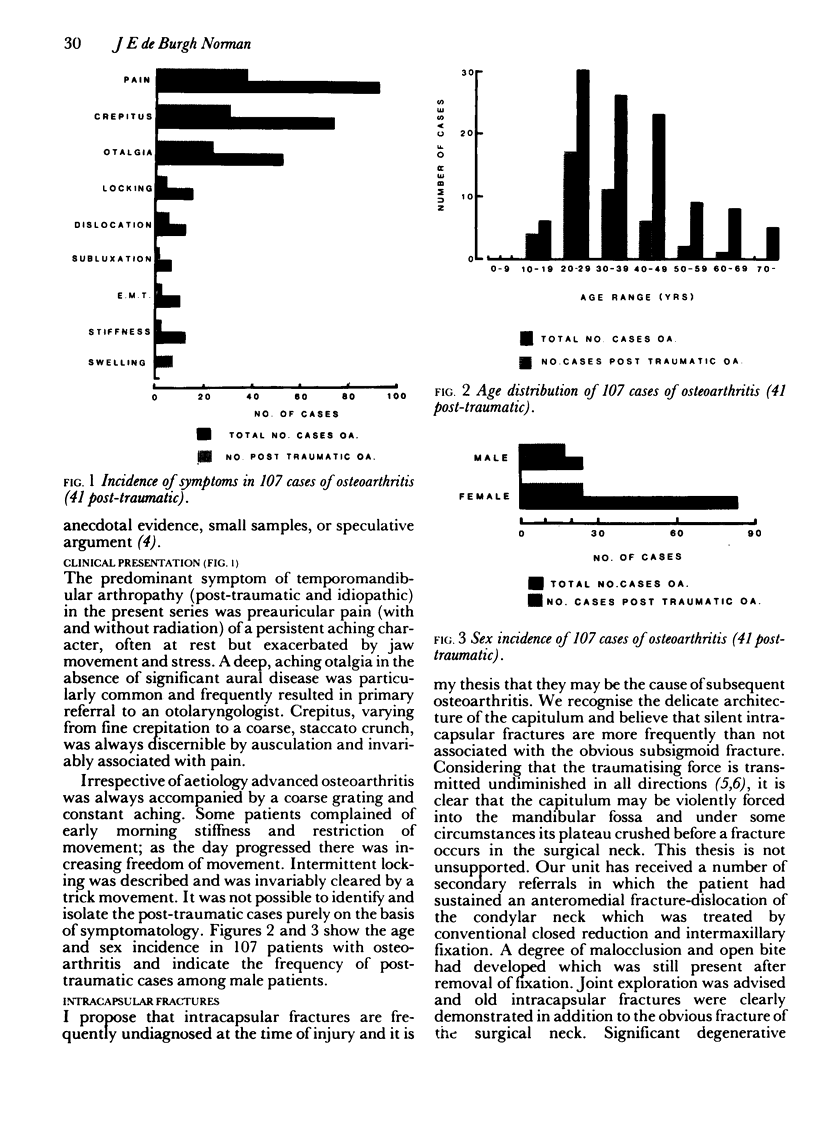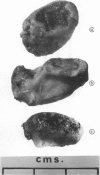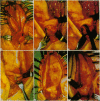Abstract
A group of 165 patients with surgical diseases of the temporomandibular joint treated in 3 Australian university hospitals is reviewed. A facial trauma is relatively common patients have been included in the post-traumatic group only if there was an undisputed history of injury requiring medical or dental treatment or admission to hospital. In 38.3% of patients with histologically proven osteoarthritis there was an undisputed history of trauma. In a further group with recurrent mandibular dislocation 62.6% were post-traumatic. Trauma was the cause of 62.5% of cases of mandibular ankylosis. There is a general tendency to underdiagnose degenerative joint disease and to perpetuate conservative treatment when it is crystal clear that these measures are not being successful. It is probable that intracapsular fractures of the jaw joint are frequently undiagnosed and a higher index of suspicion is required. Mandibular ankylosis continues to pose some difficulty of management and a critical review confirms that wide surgical exposure of the joint is essential; the importance of long-term review is stressed. The outcome of the surgical treatment of recurrent luxation is excellent and an operation of commendable simplicity is advocated.
Full text
PDF







Images in this article
Selected References
These references are in PubMed. This may not be the complete list of references from this article.
- Al-Kayat A., Bramley P. A modified pre-auricular approach to the temporomandibular joint and malar arch. Br J Oral Surg. 1979 Nov;17(2):91–103. doi: 10.1016/s0007-117x(79)80036-0. [DOI] [PubMed] [Google Scholar]
- Banks P., Mackenzie I. Condylotomy. A clinical and experimental appraisal of a surgical technique. J Maxillofac Surg. 1975 Sep;3(3):170–181. doi: 10.1016/s0301-0503(75)80040-3. [DOI] [PubMed] [Google Scholar]
- Griffin C. J., Hawthorn R., Harris R. Anatomy and histology of the human temporomandibular joint. Monogr Oral Sci. 1975;4:1–26. doi: 10.1159/000397863. [DOI] [PubMed] [Google Scholar]
- Huelke D. F., Harger J. H. Maxillofacial injuries: their nature and mechanisms of production. J Oral Surg. 1969 Jul;27(7):451–460. [PubMed] [Google Scholar]
- MacLennan W. D. Fractures of the mandibular condylar process. Br J Oral Surg. 1969 Jul;7(1):31–39. doi: 10.1016/s0007-117x(69)80058-2. [DOI] [PubMed] [Google Scholar]
- Norman J. E., Painter D. M. Hyperplasia of the mandibular condyle. A historical review of important early cases with a presentation and analysis of twelve patients. J Maxillofac Surg. 1980 Aug;8(3):161–175. [PubMed] [Google Scholar]
- Rehrmann A., Kreidler J. Late results after arthroereisis of the temporo-mandibular joint by autoplastic bone graft. J Maxillofac Surg. 1973 Jun;1(2):99–103. doi: 10.1016/s0301-0503(73)80021-9. [DOI] [PubMed] [Google Scholar]
- Schade G. J. Surgical treatment of habitual luxation of the temporomandibular joint. J Maxillofac Surg. 1977 Jun;5(2):146–150. doi: 10.1016/s0301-0503(77)80093-3. [DOI] [PubMed] [Google Scholar]
- Toller P. A. Osteoarthrosis of the mandibular condyle. Br Dent J. 1973 Mar 20;134(6):223–231. doi: 10.1038/sj.bdj.4802982. [DOI] [PubMed] [Google Scholar]
- Toller P. A. Temporomandibular arthropathy. Proc R Soc Med. 1974 Feb;67(2):153–159. doi: 10.1177/003591577406700228. [DOI] [PMC free article] [PubMed] [Google Scholar]
- Toller P. A. Use and misuse of intra-articular corticosteroids in treatment of temporomandibular joint pain. Proc R Soc Med. 1977 Jul;70(7):461–463. doi: 10.1177/003591577707000704. [DOI] [PMC free article] [PubMed] [Google Scholar]
- WARD T. G. Surgery of the mandibular joint. Ann R Coll Surg Engl. 1961 Mar;28:139–152. [PMC free article] [PubMed] [Google Scholar]




